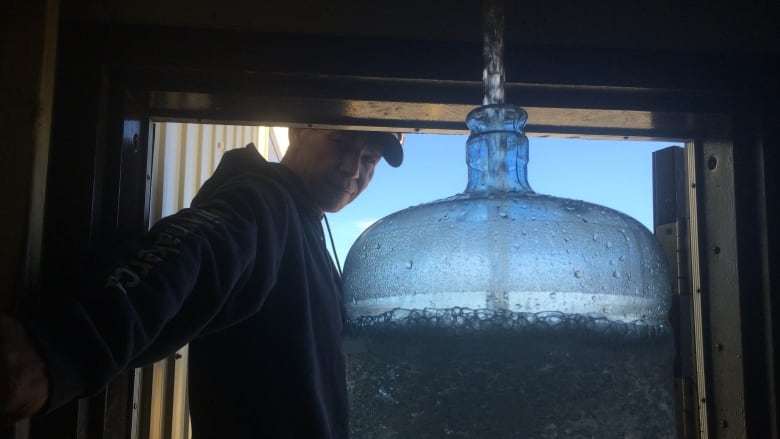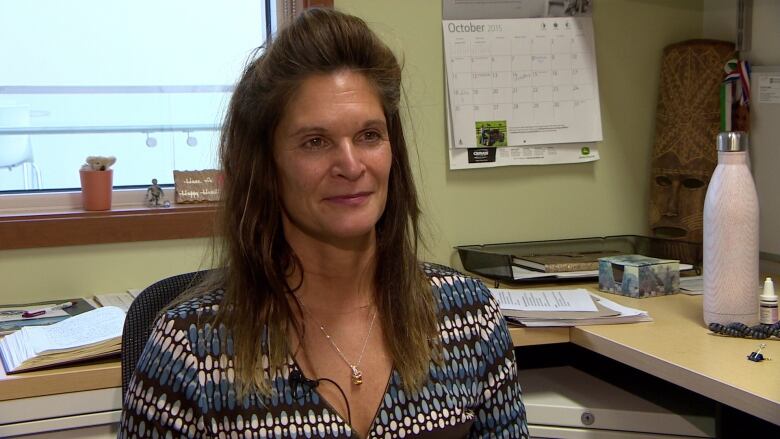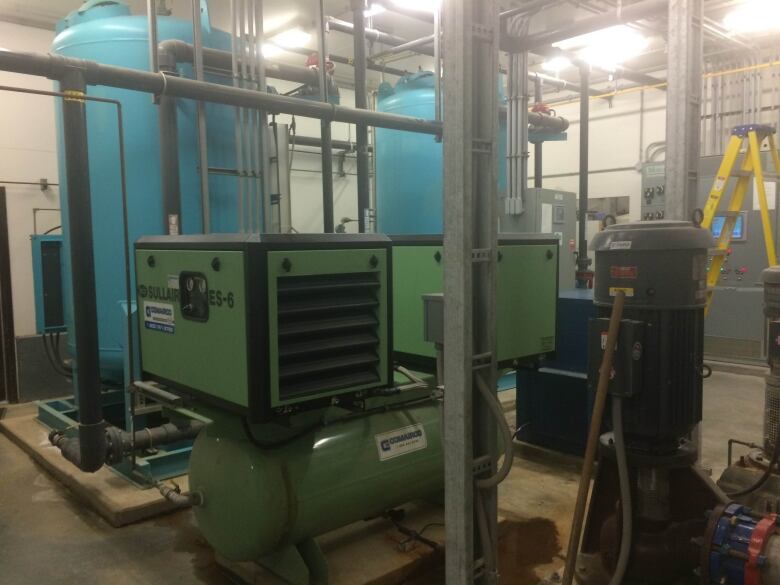90% of Saskatchewan First Nations have faced bad drinking water
Failure to resolve water problems due to Ottawas Band-Aid solution, says toxicologist

Access to safe, running drinking water is something few people in Saskatchewan have to worry about, unless they they live on a First Nation.
A CBC analysis has revealed 65 of the province's 70 First Nations have had at least one drinking water advisory since 2004. At almost 93 per cent, the number is well above the Canadian average of 65 per cent.
There is a lack of communication between the governments that are involved in managing and governing First Nations water supply.- Lalita Bharadawaj, a professor and toxicologist,University of Saskatchewan
"That says to me that the situation is a perennial issue, that not enough attention has been paid to this issue, and there is a lack of communication between the governments that are involved in managing and governing First Nations water supply," said Lalita Bharadwaj, a professor and toxicologist at the University of Saskatchewan's School of Public Health. She co-authored a recent report on the barriers to clean water on First Nations.
Many First Nations have faced multiple advisories, while some, including an area on Cumberland House First Nation have been under a drinking water advisory or order for more than a decade.
In most cases, people were advised to boil the water before drinking it. In some cases they were told to not consume it at all.
Health Canada said it had no comment on the data but said "the department knows about the problem and it is both serious and complex." Aboriginal Affairs and Northern Development Canada (AANDC) declined an interview.
Kahkewistahaw First Nation

In fact, the reserve is currently under a boil water advisory, and has been for the past 1,374 days, or about 3.75 years.
This is something that everybody deserves - good drinking water regardless of where they live.- Michael Bob, councillor, Kahkewistahaw First Nation
"This is something that everybody deserves - good drinking water regardless of where they live. And so this is something that we take serious because our people deserve good water," said Councillor Michael Bob, who is responsible for housing on the First Nation.
In 2006, AANDC built a water treatment plant on the First Nation. Clean drinking water was being delivered to each home when residents turned on their taps.
But a few years later, complications with the system left high mineral content in the water. Band members made complaints about chlorine levels in the water.

"They should have right from the beginning made sure this plant was going to run efficiently for many years not just for maybe one or two years and then we have serious problems," said Bob.
A boil water advisory was implemented and council brought in a reverse osmosis system that provides clean filtered water - but not directly to houses on the First Nation. Band members have to walk or drive to the water treatment plant each week to fill up jugs with the filtered water.
"If this reverse osmosis ever goes down, well then we are in a situation where we may have to haul in treated water that's drinkable and that's something we don't want to do," said Bob.
A water treatment plant project management team is working on getting the original plant back up and running. A consultant has been hired to assess the plant and provide a report with upgrade costs.
Bob says that report is expected at the end of the month, and when it is complete it will be given to AANDC in hopes officials will agree to pay for the upgrades.
First Nations face unique barriers

"There's so many issues, I could go on forever," said Bharadwaj.
The issues include poor source water, deteriorating treatment plants and distribution systems, difficulty finding parts to repair older treatment plants and hiring and keeping well-trained staff.
She said her research found that the governance process around First Nations drinking water management, regulation and supply is fragmented.
AANDC provides funding for the water infrastructure on First Nations. But, First Nations are also required to contribute about 20 per cent of the cost, which can often be difficult when the membership and tax base is small. Health Canada is responsible for monitoring the water quality and issuing drinking water advisories.
"So when you have this sort of complex tri-departmental structure for managing and governing water, you are going to run into issues of communication, overlap of roles and just ambiguity of just what each other's roles are in that delivery of safe drinking water."
'Band-Aid solution' hurting First Nations

AANDC has directed money toward infrastructure developments, enforcement of standards and protocols and training for treatment plant operators.
"The biggest mistake I see is that there has been a 'Band-Aid solution' for over 600 First Nation communities," said Bharadwaj.
For example, she says money spent on infrastructure or training in one community may not be as effective in another.
"I don't think a Band-Aid solution, and literally placing money where resources may not solve the issue, will resolve First Nations drinking water supply issues across the country.
"Providing a one-size-fits-all solution will not work, because each First Nation is unique and requires a site-specific solution."
She says all levels of government need to take responsibility if there is to be any chance of resolving the issue.
"I think a good approach would be to collaboratively work together -- First Nations, the federal government, the provincial governments, the municipalities and the agencies under those particular governmental levels -- to come to the table and work together," said Bharadwaj.
Bob says he agrees all levels of government need to work together to ensure his members are able to drink water straight from their kitchen taps. It's why he developed Kahkewistahaw's water treatment project management team, which is working in collaboration with AANDC and Health Canada.
"Everybody deserves good drinking water regardless of where they are in Canada. As a First Nation person, we want to ensure that our people have that here in our community," said Bob.
With files from Joanne Levasseur












_(720p).jpg)


 OFFICIAL HD MUSIC VIDEO.jpg)
.jpg)



























































































